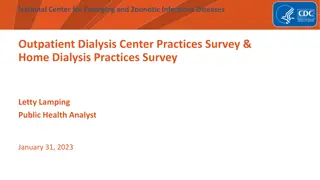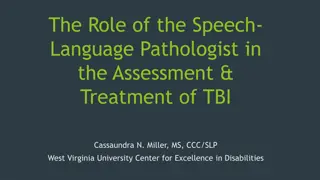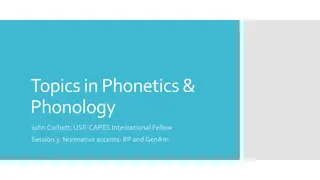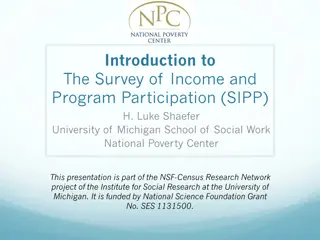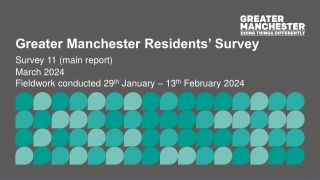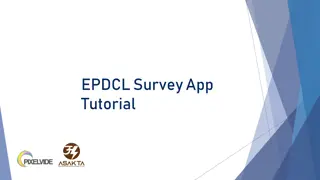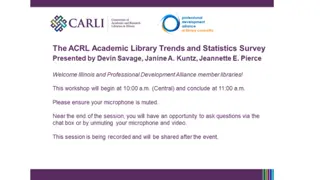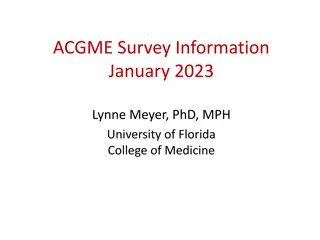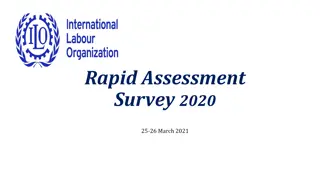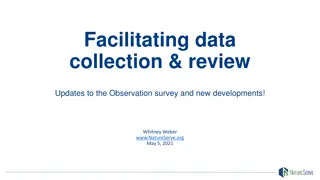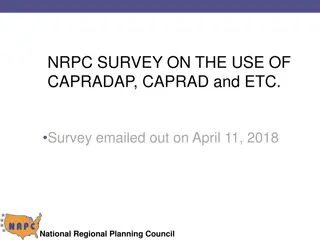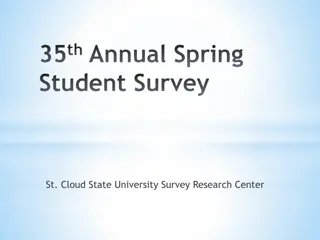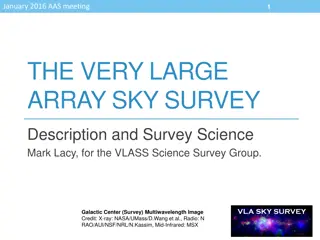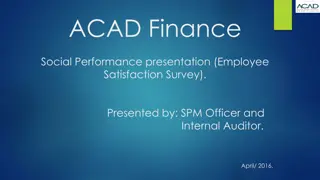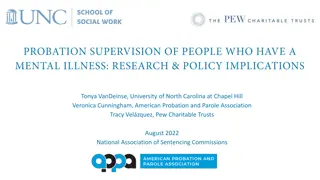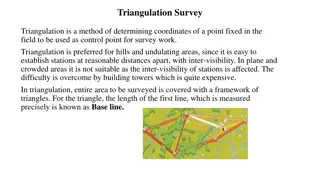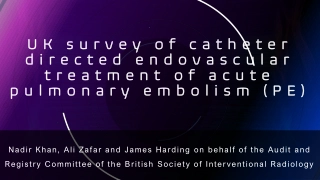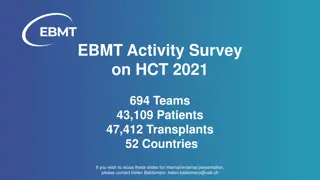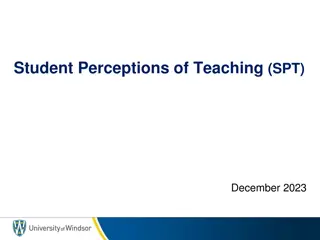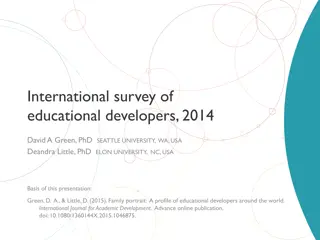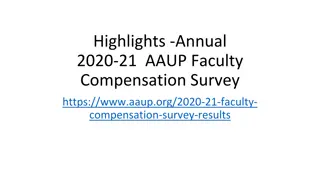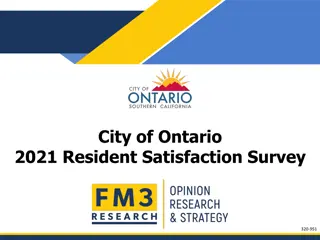Understanding Intelligibility in Dysarthria: Survey of SLPs
Dysarthria is a speech disorder impacting speech processes, with neurological disruptions seen in conditions like ALS, traumatic brain injury, and Parkinson's disease. Intelligibility, the listener's understanding of speech, is crucial for quantifying dysarthria's impact. Factors like speech tasks, listener familiarity, and recording methods influence intelligibility measurement. Accents and bilingualism can also affect intelligibility perception. Current assessments have limitations, highlighting the need for improved standardized measures in speech-language pathology.
Download Presentation

Please find below an Image/Link to download the presentation.
The content on the website is provided AS IS for your information and personal use only. It may not be sold, licensed, or shared on other websites without obtaining consent from the author. Download presentation by click this link. If you encounter any issues during the download, it is possible that the publisher has removed the file from their server.
E N D
Presentation Transcript
Intelligibility as a Measure of Dysarthria Survey of SLPs Working with Adult Populations Madeline Esch Dr. Patricia Swasey Washington & Dr. Elizabeth Grillo 2nd Annual Virtual Research & Creative Activity Day West Chester University April 29. 2021
Dysarthria Speech disorder impacting strength, speed, tone, and/or accuracy of speech processes (Rampello et al., 2016) Neurological disruption (Dykstra et al., 2007; Gurevich & Scamihorn, 2016) Amyotrophic Lateral Sclerosis (ALS) Traumatic brain injury Parkinson s disease
Intelligibility the degree to which the listener (familiar/unfamiliar) understands the individual s speech; typically reported as a percentage of words correctly identified by the listener (ASHA, n.d.) Why intelligibility? Quantifies the impact of dysarthria on an individual s speech (Hustad & Cahill, 2003; Frearson, 1985)
Components of Intelligibility Measurement Speech Tasks Single-word, sentence, conversational levels Listener Familiarity Increased familiarity tends to result in increased intelligibility scores (Hustad & Cahill, 2003) Recording Method Audiovisual vs. audio-only
Accents/Bilingualism + Intelligibility Dialect mismatch influences intelligibility perception regardless of dysarthria (Dagenais & Stallworth, 2014) Clinicians in the United States primarily speak Standard American English dialect, adding risk for communication breakdowns when working with speakers of other languages/dialects (Dagenais & Stallworth, 2014)
Limitations to Current Assessments Few SLPs use current standardized intelligibility assessments (Gurevich & Scamihorn, 2017) Majority of formal assessments were created 25+ years ago Assessments designed for one population may not be culturally/linguistically appropriate for all clients One intelligibility rating does not represent all interactions
Survey Survey of ASHA-certified SLPs working with adults Incidence of dysarthria Dysarthria assessment procedures (intelligibility) Clinician/client languages Availability of technology 63 responses
Survey Results: Dysarthria Only 4 out of 63 respondents reported never treating a client with dysarthria 63% of participants reported gaining a new client with dysarthria at least once every three months 37% at least once a month 68% have worked with clients with dysarthria who have spoken a language other than English
Survey Results: Dysarthria Assessment Of those who have worked with clients with dysarthria (59 respondents): 89% reported tracking changes in intelligibility over the course of treatment always or very often Less than 7% reported complete satisfaction with current formal intelligibility assessments 11% reported using technology-based tools to assess intelligibility
Survey Results: Dysarthria Assessment Cont. Frenchay Dysarthria Assessment (27) Assessment of Intelligibility of Dysarthric Speech (18) Tikofsky s 50-Word Intelligibility Test (2) Dysarthria Examination Battery Newcastle Dysarthria Assessment Radbound Dysarthria Assessment Robertson Dysarthria Profile Arizona Articulation Proficiency Scale Fisher Logemann Test of Articulation
Survey Results: Languages Clinicians: 96% of respondents reported English as their primary language 22% spoke one or more additional languages Over 90% reported working with clients who speak other primary languages Clients: Spanish is most common primary language other than English
Survey Results: Languages Cont. Strategies to overcome language mismatch: Translator/interpreter (67%) Family members who speak both languages (65%) Translating/interpreting device (44%)
Survey Results: Technology 56% of participants report being provided with an iPad/tablet through their workplace An additional 11% report using their personal technology 77% reported sometimes, very often, or always using electronic devices while interacting with clients 16% indicated a preference for digital over printed tools/materials 41% indicated equal preference for digital/print
Survey Conclusions Potential for development of intelligibility assessment tool Easy, quick administration Accessible Technologically-based
References American Speech-Language-Hearing Association. (n.d.) Dysarthria in adults. Retrieved from https://www.asha.org /PRPSpecificTopic.aspx?folderid=8589943481§ion=Assessment Dagenais, P. A. & Stallworth, J. A. (2014). The influence of dialect upon the perception of dysarthric speech. Clinical Linguistics & Phonetics, 28(7-8), 573-589. Dykstra, A. D., Hakel, M. E., & Adams, S. G. (2007). Application of the ICF in reduced speech intelligibility in dysarthria. Seminars in Speech and Language, 28(4), 301-311. Gurevich, N. & Scamihorn, S. L. (2017). Speech-language pathologists use of intelligibility measures in adults with dysarthria. American Journal of Speech-Language Pathology, 26, 873-892 Hustad, K. C. & Cahill M. A. (2003). Effects of presentation mode and repeated familiarization on intelligibility of dysarthric speech. American Journal of Speech-Language Pathology, 12, 198-208. Rampello, L., Rampello, L., Patti, F., & Zappia, M. (2016). When the word doesn t come out: A synthetic overview of dysarthria. Journal of the Neurological Sciences, 369, 354-360.







